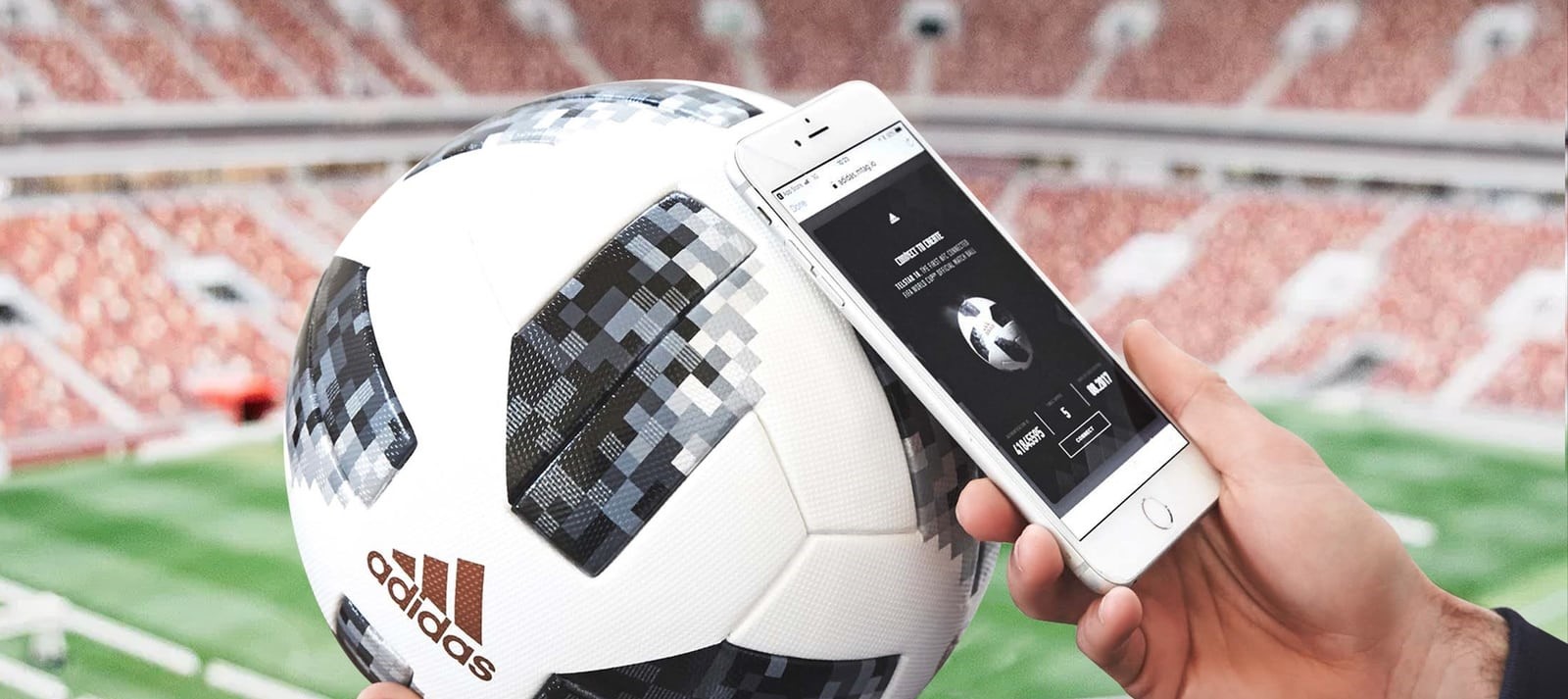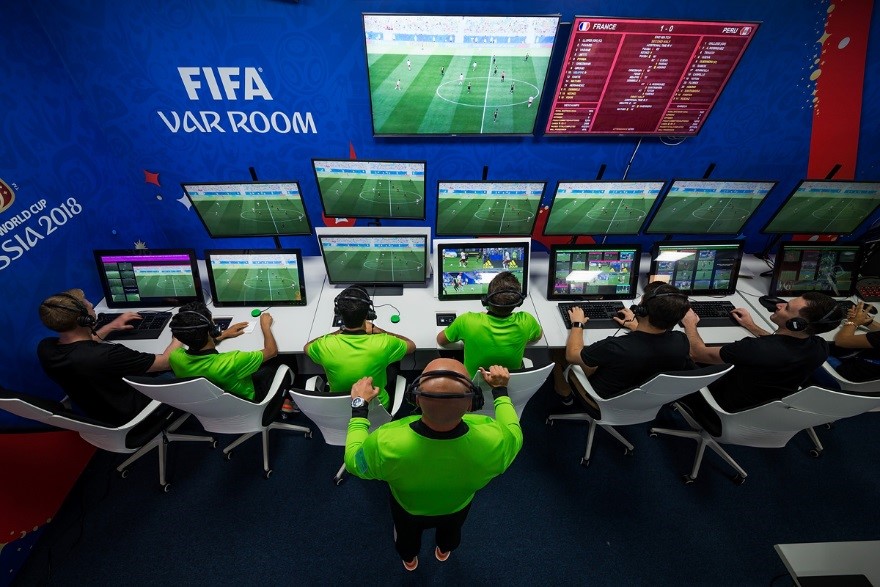Enterprise Mobility & the Connected Worker Blog
World Cup Mobility: 2018 Tech Features for Fans, Officials, and Teams
Until July 15th when one of the thirty-two qualifying international football teams claims the title of Word Champion in the final game of the tournament, it is all eyes on Russia as they host the 2018 FIFA World Cup. Not many of us are fortunate enough to hop around the eleven Russian host cities throughout June and July to enjoy the tournament live, and so a vast majority of the global population is confined to a screen-based experience.
Still, the screen is not the limitation that it once was. Much can be said about the digitally-enhanced user experience of the modern sports fan. No exceptions are needed regarding the world’s largest tournament for its most pervasive game. The 2018 FIFA World Cup offers a breadth of innovative mobile experiences to enrich football fandom. Moreover, game officials and participating teams are leveraging some groundbreaking technological efficiencies for the first time in this year’s tournament.
Mobile Innovations Enhancing Fan Engagement
A lot of the next gen mobile enrichments for World Cup viewers leverage virtual reality (VR). BBC Sport, for instance, has their own standalone VR app, the aptly named BBC Sport VR 2018 World Cup app. It is compatible with Android, iOS, Oculus and Samsung Gear VR, and Sony PlayStation VR operating systems on corresponding smartphone, tablet, and VR headset devices. In an announcement for the service, BBC says that “users will be able to watch the action direct from the stadium in a fully immersive environment - as if you were actually watching from inside the stadium in your own hospitality box.”
Facebook-owned VR pioneer, Oculus, offers a similar World Cup experience for faraway fans in the US. As recently as May 2018, they announced their new Oculus Venues service. With Oculus Go and Gear VR devices, users can access Venues to watch events in real time “with all the sounds, lights, and energy of really being there” (Exhibit 1) with some social features included for good measure. Along with a handful of concerts, comedy shows, and MLB games, 2018 FIFA World Cup coverage is among the first livestreaming VR experiences offered by Oculus Venues. The VR offerings by BBC Sport and Oculus both bring unparalleled levels of immersive fandom that will surely become more commonplace as supporting infrastructure and compatible devices are increasingly deployed.
Fans can even digitally engage with the tournament using a ball. Every World Cup, Adidas designs a new official match ball to be used in play and for sale to consumers. This year, that ball is the Telstar 18. The first of its kind, the Telstar 18 is embedded with an NFC chip–it is a Smartrac chip but Blue Bite is behind the software. Fans who purchase an official match ball (at an admittedly hefty $124) can use their smartphone to interact with the ball, unlocking exclusive, evolving content and access to special challenges. While the NFC chip is not utilized for any gameplay purposes, it offers a new and unique way to make the FIFA World Cup all the more engaging to its most committed followers.

A Controversially Flawless Future of Officiating
New to the FIFA World Cup this year, Video Assistant Referees (VARs) have been the topic of much discussion. To the excitement of some and the dismay of others, FIFA’s implementation of this system will likely change the way the tournament is officiated forever.
Each field used for World Cup gameplay is equipped with 33 broadcast cameras, eight of which are super slow-motion and another four of which are ultra slow-motion. The VAR system, with a bounty of screens that have access to these camera, is monitored by a remote four-person crew of official refs headquartered in Moscow during the 2018 World Cup (Exhibit 3). In-game officials communicate directly with the remote VARs via an ear piece for especially tough calls. VAR consulting is limited to certain call types though: goal/no-goal decisions, penalty/no-penalty decisions, direct red card decisions, and cases of mistaken identity. FIFA has also insisted that VAR technology ought to be used to overturn only “clear and obvious mistakes” made by an in-game match official. Essentially, the VAR system ensures there will never be another Hand of God situation again.

Although new to the World Cup, the technology is tried-and-true. Sony-owned Hawkeye Innovations provides it, and they have been actively deploying their solutions to help officiate football, cricket, and tennis matches for years. Their goal-line technology (GLT) system uses multiple well-placed cameras in order to monitor the movement of balls, players, and other in-game objects across 3 dimensions.
The Growing Role of Big Data in Sport
The teams themselves stand to benefit from technological innovations this year as well. SAP, a forerunner of data analytics in sport, among other things, debuted new features of their SAP Sports One solution in collaboration with the German national team for the 2018 FIFA World Cup. The two entities have worked together for years, much to the benefit of the German national team. This year, SAP introduced a “video cockpit and player dashboard to respond to the team’s evolving need to analyze and share relevant match data efficiently” and in real time.
Since the partnership began in 2013, the German team has been empowered by the insights provided by SAP’s Sports One solution (they won the 2014 World Cup over Argentina, for instance). In the same press release citing its new features for this year, SAP also discussed future plans to leverage AI and machine learning to help in the areas of talent development and player scouting.
At the time of writing, the power of data analytics is humbled: Germany will not advance to the knockout round. Still, that use case relied heavily on human interpretation and responsive execution. Predictive analytics may have redemption yet.
World Cup Technology and Enterprise Applications
All the examples discussed here offer a glimpse at the symbiosis of enterprise and consumer-facing technologies. SAP, besides helping Germany improve their football game, is an enterprise software application behemoth that has been enabling the digitalization of all industries for decades. Blue Bite, behind the NFC-enabled official match ball, helps enterprises innovate for an IoT world with NFC, RFID, barcode, and Bluetooth solutions.
Meanwhile, VR technology is improving the operational processes in critical environments like the manufacturing floor. The Virtual Assistant Referee system was even created based on existing technologies used for brain surgery and missile tracking. For more on the enterprise applications all of these technologies and many more, check out our full line of AutoID & Data Capture, Enterprise Mobility & Connected Devices, Industrial Automation & Sensors, and IoT & Embedded Technology research coverage.
View the 2018 Enterprise Mobility & Connected Devices Research Outline to learn more.